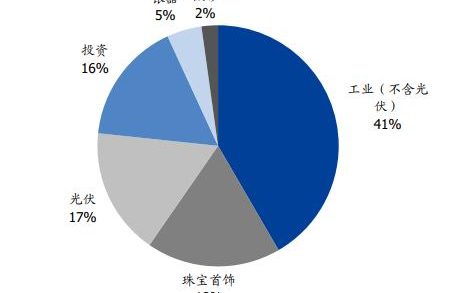
Read More《咖啡和空间,谁才是130亿美元星巴克中国的原点》
Positive Reviews: Joint Ventures and Spatial Advantages Open New Growth Windows for Starbucks China
The strategic cooperation between Starbucks China and Boyu Capital is an important turning point in its development in China, providing crucial support for achieving the goal of “20,000 stores.” The positive significance of this transaction is mainly reflected in three aspects:
Firstly, the joint – venture model injects local resources and expansion momentum into Starbucks China. As an asset management company deeply involved in the Chinese market, Boyu Capital’s understanding of the local business environment and its ability to integrate regional resources precisely make up for the shortcomings of Starbucks, a foreign brand, in expanding into the sinking market. As mentioned in the news, the two parties have clearly set “accelerating the expansion in small and medium – sized cities and emerging regions” as the core goal. The proportion of Starbucks China’s stores in third – tier and lower – tier cities has increased from 17% at the end of 2024 to 35%. This data confirms the demand for its spatial value in the low – tier market. In small and medium – sized cities where coffee consumption is not yet fully popularized, the brand scarcity of Starbucks can still support the social attribute of its “third space” (such as formal meetings, family gatherings and other essential scenarios). The participation of Boyu will accelerate this penetration process.
Secondly, the underlying logic of the spatial business remains the core moat of Starbucks China. Although the competitiveness of its coffee products is currently suppressed by local brands, the success of Starbucks’ 41,000 stores globally is essentially a victory of “spatial chain.” Through standardized store design (such as green – apron service, comfortable seats, background music) and stable experience output (a globally unified spatial atmosphere), it has built a brand power of the “third space” that is difficult to replicate. This ability is even more scarce against the backdrop of the rising closure rate of independent cafes (for example, the proportion of independent cafes in Shanghai has decreased from 60.1% to 55%) and the struggling situation of internet – famous bookstores. As mentioned in the news, “newly opened stores in Starbucks China have continuously contributed above – average same – store sales in the past two years,” which indirectly shows that its spatial model still has profit potential in new markets.
Finally, the recent product adjustments and innovations have achieved initial results, laying the foundation for the upgrade of the spatial business. Starbucks China has taken measures such as accelerating local product innovation (such as the global debut of the sugar – free toffee nut latte), reducing the prices of non – coffee beverages (with an average reduction of 5 yuan for large cups), and expanding the food menu, which have short – termly boosted the same – store transaction volume (with a 9% increase in the same – store transaction volume in Q4 of fiscal year 2025). Although these actions have not reversed the downward trend of the customer unit price, their essence is to “attract customers” to the spatial scenario. By attracting consumers to the store with high – cost – performance products and then extending their stay time through spatial experiences (such as themed stores, interest community activities) and increasing non – coffee consumption (such as baked goods, retail products), the “secondary value” of the space can be explored.
Negative Reviews: Weak Coffee Product Power and Vague Spatial Value Are the Core Challenges
Although the cooperation has sent positive signals, Starbucks China still needs to face two core contradictions: the structural disadvantage in the competitiveness of coffee products and the vague perception of spatial value in high – tier cities.
Firstly, coffee products can no longer support the premium logic of Starbucks China. The Chinese coffee market has shifted from “cultural symbol consumption” to “daily functional consumption.” Local brands such as Luckin and Cotti have completely reshaped the competition rules through extreme cost – performance (with unit prices below 10 yuan), high – frequency new product launches (Luckin launches over 100 new products a year), and efficient supply chains (Luckin’s single – cup cost is about 7 – 10 yuan). In contrast, the single – cup cost of Starbucks China is as high as 15 – 20 yuan (about 1.5 – 2 times that of Luckin), and the customer unit price remains at 36 yuan (while Luckin’s is only 14.28 yuan). This “high – cost + high – pricing” model has no advantage in the price war. As mentioned in the news, the customer unit price of Starbucks China has declined for 12 consecutive quarters (with a 7% decline in Q4 of fiscal year 2025), and the growth of same – store sales mainly relies on “trading price for volume.” This growth model is unsustainable. When consumers regard Starbucks coffee as a “poor – value” choice, the “coffee dependence” of its spatial value will be completely broken.
Secondly, the spatial value in high – tier cities has fallen into a “positioning blur” dilemma. The “third space” of Starbucks is supposed to be a carrier of “relaxation, social interaction, and community connection,” but in high – tier cities, its actual experience is seriously out of line with consumers’ expectations: the stores are noisy (often used as temporary office spaces), the service is standardized but lacks warmth (with less interaction between baristas and customers), and the spatial design is homogeneous (with less difference from other chain brands). As mentioned in the news, consumers “don’t know what kind of spatial atmosphere Starbucks can provide now.” This vague perception directly leads to the “hollowing – out” of the spatial value in high – tier cities. Consumers are neither willing to pay a premium for coffee nor willing to stay and consume in the space, and ultimately, the stores have become functional stores for “passing purchases.” The lesson from the South Korean market is even more worthy of vigilance. When Starbucks tried to compete with local brands on cost – performance by reducing prices and introducing small – sized cups, its number of stores and market share stagnated for a long time, which confirms that the strategy of “using one’s weakness to compete with the opponent’s strength” is not feasible.
Advice for Entrepreneurs: Extract the “Product – Space” Balance from Starbucks China’s Transformation
The transformation dilemma of Starbucks China provides three key insights for entrepreneurs:
Clarify the “origin” of core competitiveness and avoid blindly following the track logic. The origin of Starbucks is the “spatial business,” but it was forced to be involved in product competition due to the changes in the coffee market, resulting in the dilution of its advantages. Entrepreneurs need to first clarify their core value (whether it is product power, spatial experience, or technological barrier) and build strategies around the origin. For example, if the focus is on the “spatial business,” they need to strengthen scenario differentiation (such as the self – study space of Man Coffee and the park leisure space of Noding Coffee) instead of competing on price with product – oriented brands. If the focus is on the “product business,” they need to build barriers in cost control and new product launch speed (such as Luckin’s “blockbuster product + supply chain” model).
Build a compound growth model with “product for customer attraction + space for value – added”. Starbucks’ attempt (using discounted beverages to attract customers to the store and then exploring incremental revenue from retail and baking through spatial experiences) is worth learning from. Entrepreneurs can design a combination of “basic products (high – cost – performance for customer attraction) + spatial services (high – margin for value – added).” For example, a coffee shop can launch a 10 – yuan “customer – attracting coffee” and at the same time provide paid services such as handicraft experiences and themed activities. Offline stores can reduce operating costs by allowing customers to place orders via a mini – program for self – pick – up and then guide customers to the store to participate in spatial activities through a membership system, thus extending the user life cycle.
Dynamically calibrate the “perception of spatial value” to meet local needs. The spatial positioning blur of Starbucks in high – tier cities is essentially due to its failure to update the definition of the “third space” according to consumer changes. Entrepreneurs need to regularly research the evolving needs of their target customer groups (such as the preference of Generation Z for “interest – based social interaction” and the need of office workers for “efficient office spaces”) and strengthen the perception through hardware transformation (such as themed stores) and service innovation (such as pet – friendly policies, cycling communities). For example, they can cooperate with local KOLs to create a “city cultural hub” or jointly hold pop – up events with other brands to upgrade the space from a “consumption place” to a “community cultural center.”
Beware of the growth trap of “trading price for volume” and focus on long – term profit quality. The continuous decline of Starbucks’ customer unit price shows that sacrificing profits for short – term sales may damage the brand’s premium ability. Entrepreneurs need to set a “bottom line” in their pricing strategy. For example, they can reduce costs by optimizing the supply chain (instead of directly reducing prices) or launch a combination of “basic models + limited – edition models” (with basic models to ensure traffic and limited – edition models to ensure profits) to avoid falling into the vicious cycle of “price reduction – profit decline – service shrinkage – user loss.”
In summary, the transformation of Starbucks China is essentially a strategic correction of “returning to the origin” – from being driven by coffee products to being driven by spatial value. In this process, its experiences and lessons provide important references for entrepreneurs. In the rapidly changing consumer market, only by adhering to core advantages, dynamically calibrating user perception, and building a compound growth model can one achieve long – term survival and development in the competition.
- Startup Commentary”Building LLMs: The Knowledge Graph Foundation Every AI Project Needs”
- Startup Commentary”The 17th Year of Tmall Double 11 and the New Map Rewritten by AI”
- Startup Commentary”How to Prepare Your Data for Artificial Intelligence”
- Startup Commentary”Small and Medium-sized Banks: “Cutting the Tail” in Loan Assistance”
- Startup Commentary”The Six AI Giants on Stage: AGI Is No Longer a “Future” Thing”




